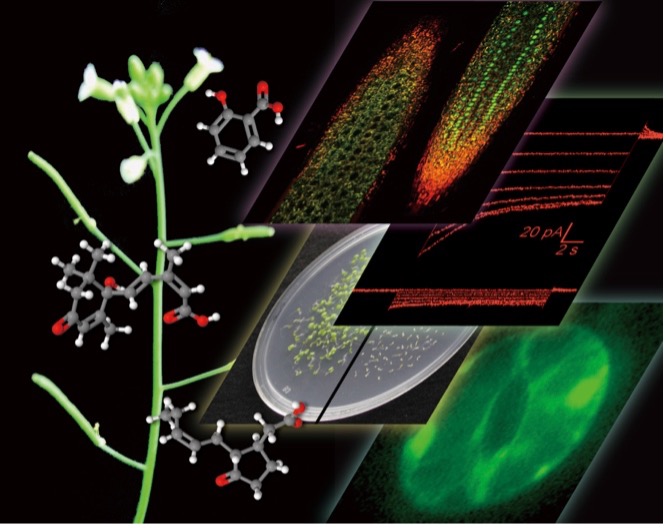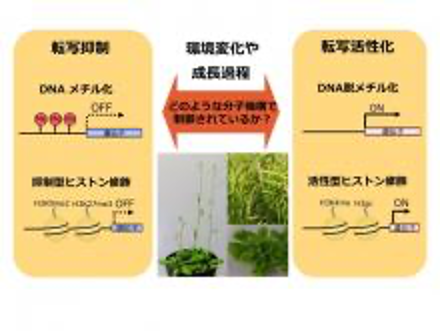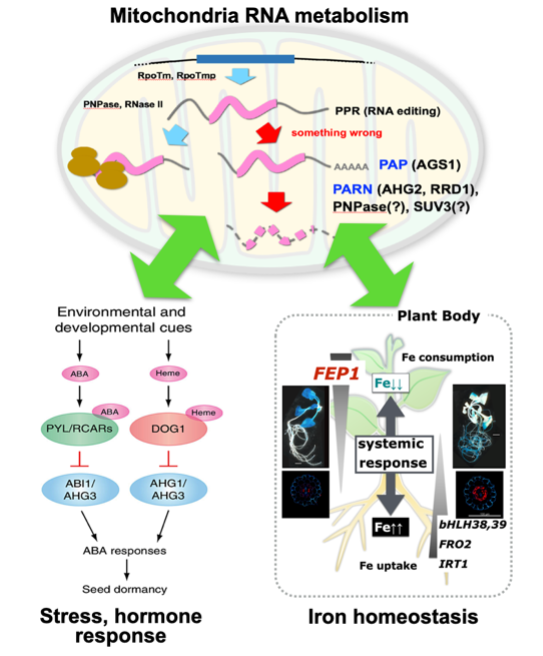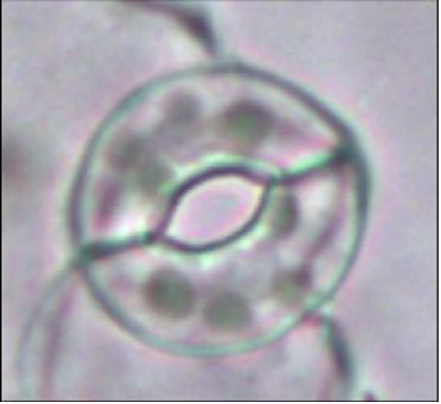Signaling Mechanisms

Did you know that plants, despite being rooted in one spot, are actually quite adaptable to changes in their environment? It’s fascinating to think about how they sense and respond to these changes without having a nervous system or brain like animals do. This is a question that scientists are still trying to answer. Our research group is specifically investigating how plants integrate and analyze environmental information, even at the tissue level, to determine the best response as individuals. We’re focusing on plant hormone responses and chromatin regulation, using techniques like physiological and molecular biology, as well as molecular genetics. Our ultimate goal is to apply this knowledge to develop stress-tolerant crops that can thrive even in challenging conditions. By understanding how plants handle environmental stress, we can help create a more sustainable and resilient food supply for the future.
 |
|
|---|
 |
|
|---|
Signal Integration Mechanism in Guard Cells.
Sessile plants possess sophisticated mechanism to withstand severe biotic and abiotic stresses. The regulation of stomatal opening plays a crucial role in plant stress response. Stomata not only facilitate the entry of carbon dioxide for photosynthesis but also regulate water uptake from the roots to the leaves, control water loss through transpiration, and can serve as pathways for pathogen invasion. Therefore, the decision-making process that regulates stomatal opening size is a matter of life and death for plants. In our research, we investigate the mechanisms underlying stomatal regulation and signal integration suing multiple disciplines, including molecular biology, cytology and biophysics.
In addition, we investigate the molecular mechanisms underlying the efficient distribution of carbon dioxide within the leaf for optimal photosynthesis.
 |
|
|---|
Epigenome regulation in plants
 Epigenome regulation means regulation of gene expression through change of chromatin higher-order structures other than the DNA base sequence, such as DNA methylation and histone modification. We aim to freely regulate gene expression without changing the DNA base sequence by clarifying the epigenome regulation mechanism to alter it.
Epigenome regulation means regulation of gene expression through change of chromatin higher-order structures other than the DNA base sequence, such as DNA methylation and histone modification. We aim to freely regulate gene expression without changing the DNA base sequence by clarifying the epigenome regulation mechanism to alter it.
We are conducting a study to clarify the epigenome regulation mechanism in plants and technology development to alter the genomic status of specific genes by using a genetic approach in Arabidopsis, liverworts, crops, etc.


